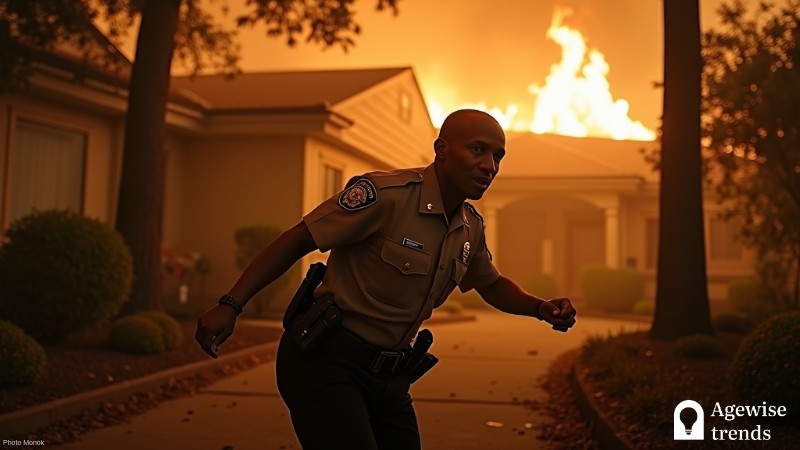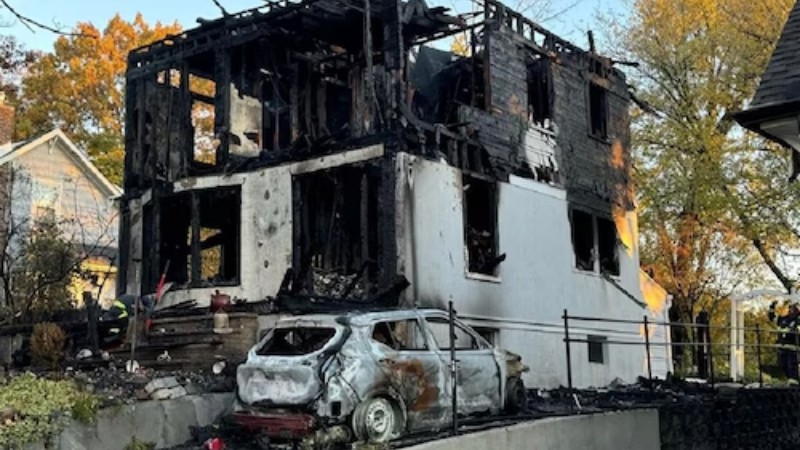A dramatic and dangerous situation unfolded at the MonteCedro Retirement Community in Altadena, California when a fast-moving wildfire called the Eaton Fire threatened residents. The facility had begun evacuations, but two residents remained inside without knowing the danger.
One of them was a 100-year-old woman who, because of her hearing issues and uncharged hearing aids, missed the call to leave. Deputies Nicholas Martinez and Quinn Alkonis went through the dimmed halls of the senior living complex to make sure everyone was out. They used flashlights and called out for anyone left behind.
Key Takeaways
A dramatic wildfire evacuation at a California senior home highlights urgent concerns over emergency preparedness and safety measures for seniors with disabilities.
- Two residents were missed during evacuations due to delayed alert systems, highlighting the need for alternative warning methods such as flashing lights or vibrating alarms.
- Senior care facilities are being urged to reassess evacuation protocols to prevent similar situations in the future, including regular emergency drills tailored to elderly residents’ needs.
- Experts recommend maintaining accurate headcounts, using a buddy system, and training staff members to conduct thorough evacuation sweeps to ensure no one is left behind.
Deputies rescue stranded seniors
During their careful search of the smoky corridors, they heard a faint but clear voice amid the chaos. The elderly resident was trying to get out of her room. She looked confused and tired, leaning heavily on her walker.
With smoke all around and the emergency unfolding fast, she urgently asked the deputies for help, scared of being left behind. Her words showed just how serious her situation was, needing quick help. Deputy Martinez and Deputy Alkonis acted fast. They carefully helped her reach safety, away from the fire’s threat.
Earlier that day, the deputies had also found another resident who was about to walk her dog, unaware of the nearby fire. Both women were safely evacuated before the fire could reach them. Without the deputies’ help, the situation could have been tragic.
Investigation into evacuation delays
The incident has raised big concerns about how effective emergency procedures are at senior care facilities, especially in areas prone to disasters. MonteCedro, home to nearly 200 residents, had started evacuating before the official order came. Despite going through the building multiple times and sounding alarms, two residents were missed.
There is scrutiny over the delayed evacuation alerts for western Altadena. These alerts were sent nearly ten hours after those for the eastern part. Investigations are ongoing to understand why the alert system failed to quickly warn the people in harm’s way.
Deputies with the Los Angeles Sheriff Department find a 100 year old woman left behind after her assisted living home evacuated without her during the Los Angeles fires. pic.twitter.com/w3F7XmzXLG
— Kevin Dalton (@TheKevinDalton) January 29, 2025
Episcopal Communities & Services, which runs MonteCedro, has admitted there are gaps in its emergency plans. CEO James Rothrock stated they need to thoroughly review and improve future preparations. The California Department of Social Services is also looking into why the two residents were left behind.
First responders, like Martinez and Alkonis, weren’t told about earlier evacuation efforts when they arrived. Their search was just a precaution, but it ended up being crucial in saving lives.
Strengthening safety measures for senior care
This incident underscores the importance of strengthening emergency preparedness plans for senior living communities, particularly those housing residents with mobility challenges or sensory impairments. Facilities are now being urged to reassess their evacuation protocols to prevent similar situations in the future.
One of the primary concerns is ensuring that residents with hearing impairments receive timely evacuation alerts. Experts suggest incorporating alternative alert systems, such as flashing lights or vibrating alarms, to ensure that critical warnings reach all residents. Regular emergency drills tailored to the needs of elderly residents, including those with cognitive or mobility limitations, are also being recommended.
Moreover, officials stress the importance of maintaining accurate headcounts and using a buddy system to ensure no one is left behind. Training staff members to conduct more thorough evacuation sweeps and utilizing real-time tracking systems for residents may also improve safety outcomes.
As emergency preparedness policies come under review, the bravery of the deputies who risked their lives to rescue the stranded seniors serves as a stark reminder of the vulnerabilities that older adults face during disasters. The incident has reignited conversations about the need for more stringent safety measures in senior care communities, reinforcing the importance of proactive planning and rapid response in times of crisis.















